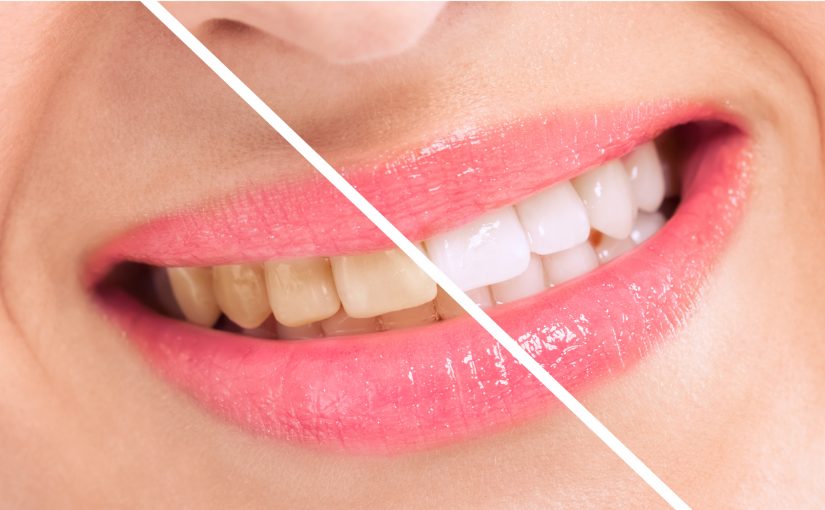So much of your confidence relies on the minute details of your appearance. For example, straight, white teeth lend beauty to your smile, leaving a lasting impression on friends, family members, and acquaintances alike. You feel better when your smile is brighter, but there are so many teeth whitening options available—which one should you choose?
It can be challenging to pinpoint a suitable teeth-whitening method, but Foutz Family Dentistry can help. Various options fit your lifestyle and needs, from professional in-office treatments and custom-made trays to one-use disposable techniques.
Read on for the benefits of each teeth-whitening method. We hope this information helps you make a more informed decision about achieving a radiant smile.
Understanding the Different Teeth Whitening Options
- In-Office Whitening Treatments—What to Expect
In-office whitening treatments are thorough and professional, providing instantaneous results with high-quality whitening elements. Under dental supervision, sessions can last one to two hours, whitening your teeth several shades in a single visit.
Estimated Cost—$500 to $1000 per visit
In-office whitening is quick, professional, and the most effective, but the most expensive with the most temporary sensitivity afterward.
- Custom Whitening Trays—How They Work and Their Benefits
Customized to fit your teeth perfectly, custom whitening trays are flexible and portable. Dental professionals prepare your tray, then apply it at home over days or weeks for a brighter, sparkling smile. The trays are used with professional-grade dental whitening gels, making it easier to achieve a radiant grin from the comforts of your couch.
Estimated Cost–$100 to $600 per visit
Custom whitening trays are the long-term economical choice, perhaps a quarter of the cost of in-office whitening. These are ideal for in-between maintenance after in-office teeth-whitening treatments.
- One-Use Disposable Whitening Trays: Quick, Easy, and Convenient
Convenient and often sold over the counter, one-use disposable whitening trays are prefilled with whitening gel and come with clear instructions for home use. These aren’t custom-fitted, but they can provide a quick fix in case you need a brighter, whiter smile for an event in a hurry.
Estimated Cost–$20 to $50 per treatment
Disposable trays are the cheapest upfront option, but they are single-use, good for quick touch-ups, and not sustainable for long-term use.
How to Maintain Your Whitening Results: Post-Treatment Care Tips
- Steer clear of coffee, tea, and other staining foods and drinks. If you must continue consuming dark-colored beverages, use a straw to bypass your teeth.
- Develop and stick to a brushing and flossing routine. Good oral health means brushing twice daily, flossing once daily, and removing plaque to prevent new stains.
- Rinse your teeth after every meal. Swish with water after eating or drinking to remove food and beverage debris that could stain your teeth.
- Quit smoking. Tobacco stains your teeth, leaving behind hard-to-remove yellow and brown. Steer clear of this bad habit to maintain a bright, white, healthy smile.
Your smile is unique and entirely your own. It makes the first impression, expresses emotion, and showcases your natural charisma, so it can be emotionally devastating when something happens to compromise your teeth. At Foutz Family Dentistry, we offer various teeth whitening options—whether you’re looking for the powerful results of in-office whitening, the flexibility of custom trays, or the convenience of one-use disposable whitening trays. Our team can guide you through each process, helping you accomplish a brighter, healthier smile to be proud of.
Ready to sparkle? Contact us now to schedule a consultation and find the perfect teeth-whitening solution!










 Learning that at-home treatments aren’t very safe or effective can be discouraging. Thankfully, you can obtain beautiful results from my individualized bleaching treatment plans. When patients see me for bleaching, they can try prescription bleach with custom bleach trays that they use at home. Or, they can opt for in-office bleaching. Whatever choice they make, they can be sure that professional bleaching offers the safest, most effective solution for teeth whitening.
Learning that at-home treatments aren’t very safe or effective can be discouraging. Thankfully, you can obtain beautiful results from my individualized bleaching treatment plans. When patients see me for bleaching, they can try prescription bleach with custom bleach trays that they use at home. Or, they can opt for in-office bleaching. Whatever choice they make, they can be sure that professional bleaching offers the safest, most effective solution for teeth whitening.


